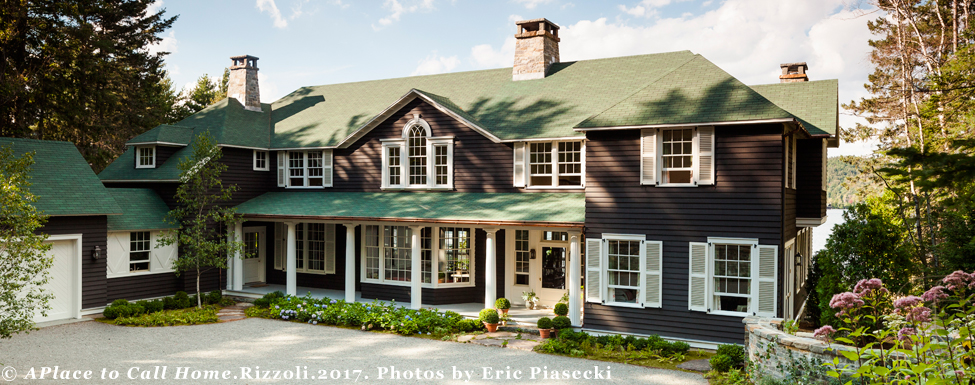Gil Schafer
Follows His Architectural Heritage
Although Gil Schafer III grew up in many different places—from Ohio to a farm in New Jersey, California to New York (with winters in the Bahamas)—there was never a doubt in his mind that he would be an architect.
“I am the grandson and the great-grandson of architects,” Schafer explains, “and it was very much in my DNA. As a child I was always creating, making things out of Legos, drawing cars and houses. I think I wanted to be an architect because I knew what that meant. It just seemed natural and it was something I loved doing.”
It was Schafer’s exposure to so many different landscapes and styles of houses that contributed to his education and to his understanding of house and home.
“I learned two things on these childhood rambles that, professionally, have served me exceptionally well. The first was that a house that makes you feel happy, welcome, and secure is a success, no matter the style or architecture or the degree of lavishness.
“The other was that how I felt about any residence I visited was entirely intertwined with my response to its setting. The nature of the nature—the climate, the landscape, the sounds, the aromas, and light—was a strong determinant of my feelings about a home.”
Schafer attended Haverford College, just outside Philadelphia, and then went on to Yale for graduate studies in architecture. Upon graduating he went to work for his studio critic Bernard Tschumi, the leading deconstructivist architect and then dean of the Graduate School of Architecture, Planning and Preservation at Columbia University.
The irony was that a classicist had gone to work for the leading proponent of the opposite of classicism, but it was an important learning curve for Schafer.
Schafer moved on to work for Ferguson & Schamamian, one of the leading high-end residential architectural firms in the country, where he stayed for almost a decade.
“I worked on some big projects for them,” Schafer recalls, “and learned a lot about classicism and being a professional architect.”
Sixteen years ago, Schafer started his own business and has never looked back. His well-established reputation puts him in constant demand and he is considered one of the leading practitioners of contemporary classical architecture. He is a member of Architectural Digest’s AD 100 and winner of Art of Design Award from Veranda magazine.
With his team of 35 people, he is able to offer a multitude of services and also work on small projects as well as the more challenging large ones. The first meeting with a prospective client is where it all begins.
“Usually we try to meet at our offices,” explains Schafer, “and evaluate if we are the best architectural firm for the project; to see what the client’s goals and dreams are. Ideally, our points of view mesh and we are off and running. Then we go to the site and get a sense of where it is, what the challenges are, and what forces will be at work. Context is so important.”
Schafer describes himself as a classical architect, always traditional and always rooted in American architectural history. He describes his style as understated, but tied to place and context and designed to look as if it has always been there. Reading the landscape is uppermost in his design process.
“As important as a commitment to classicism has been to me, no less meaningful is my desire to create architecture that is effectively responsive to a set of circumstances. To me, architecture is never about a theoretical idea. The question is always ‘How does it feel?’ Once I have forged an emotional connection with a project, I begin to experience it as I draw it—a specific narrative unfolding as if I were writing a story.”
From reconfiguring a structure in Mill Valley and to turn it into the perfect California residence, to a Connecticut colonial, a spectacular Adirondack haven, a Fifth Avenue apartment with panoramic views of Central Park, a magnificent historic house in Charleston, and in projects from Maine to Georgia, Schafer has created unique but timeless residences for a multitude of clients.
In addition to the architectural aspect of the project, Schafer does occasionally take on decorating projects.
“I am always grateful and excited when clients offer me a chance to complete the project by allowing me to create a specific decorative vision to accompany my architectural one.”
Schafer has recently published A Place to Call Home: Tradition, Style, and Memory in the New American House. In it he profiles seven of his projects, including his own spectacular house in Maine. Reading his design philosophy and viewing the accompanying photographs, one can understand why he is in such demand. There is an innate understanding of the project and the person and the importance of melding them together, which he does so well.
In his spare time, what little of it that he has, Schafer spends time at his country house in the Hudson Valley, looking at land, poking around antique shops and enjoying the fruits of his labors.
“I’m a guy who loves what he does,” Schafer says. “My career is built around my passion and that’s a great privilege. I love working on houses and have been fortunate enough to have clients that have brought me to interesting places.”

